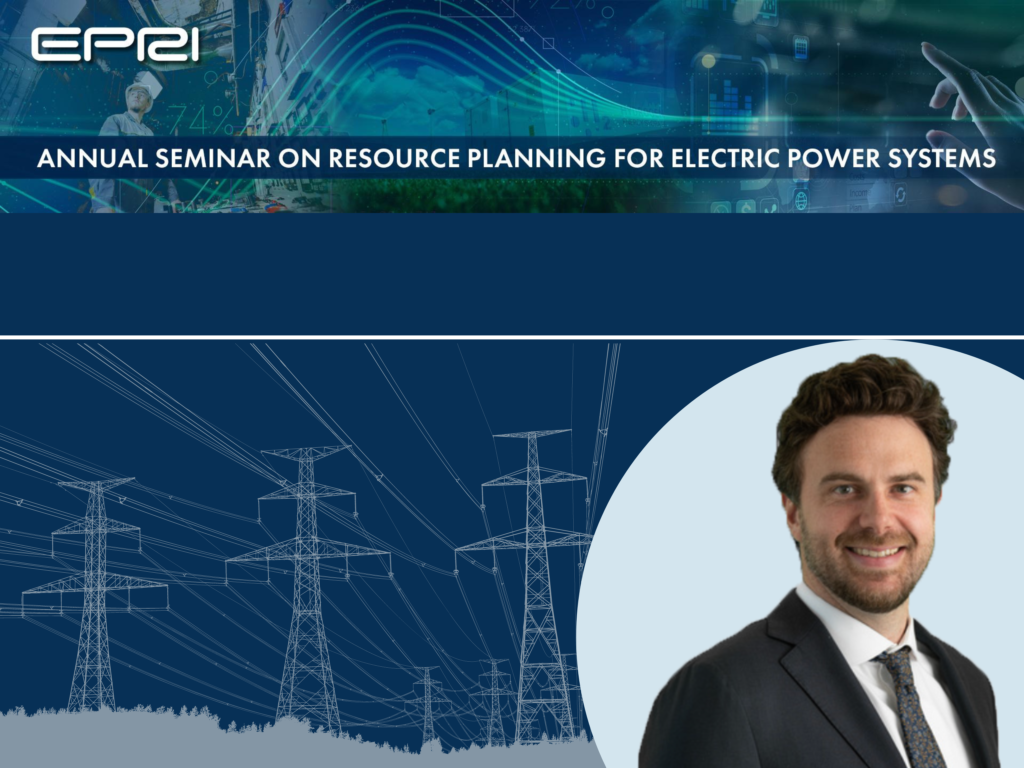
Decarbonizing our economy requires that we decarbonize electricity, transportation, and industrial processes. According to Energy Futures Initiative (EFI) Vice President of Research Alex Kizer, electricity is the most prepared of the energy sectors for the clean energy transition, though challenges remain.
On November 9, 2022, Kizer spoke at the Electric Power Research Institute’s (EPRI’s) 41st Resource Planning for Electric Power Systems seminar alongside David Young (EPRI) and Angie-Bond-Simpson (Salt River Project). The panelists discussed barriers to electric sector decarbonization goals and how resource planners might use emerging technologies to overcome those barriers.
“In order to effectively decarbonize [the electricity sector], there is going to be a lot that needs to be navigated,” Kizer said. “Tactical questions must be sorted through.”
These questions stem from constraints for resource planning that are implicit within the electricity sector, along with the recently passed Inflation Reduction Act (IRA) and Bipartisan Infrastructure Law (BIL). Kizer said that while these laws dedicate more than $1 trillion in funding for clean energy, the legislation passed very quickly, leaving processes—such as the U.S. Department of Energy’s management of funding opportunity announcements for BIL programs—opaque and clunky.
It can be highly complex to access these funds; for example, determining whether all parts of a project qualify for loans. “A lot of legislation was passed really quickly, which is very exciting, but the dust really needs to settle,” he said.
The IRA and BIL also introduce new questions related to technology evaluations, regulator approval, partnerships, permitting, and award processes. These factors affect resource planning. The “electricity sector needs time to wade through these opportunities” and develop “internal strategies” for pursuing them, Kizer said.
When it comes to the electricity sector, regional resources and market dynamics are vital for answering these tactical questions in resource planning. Kizer noted that the current composition of regional resources will play an enormous role for policy enablers, such as tax credits, grants, and more. Kizer specifically highlighted the regional variability of clean hydrogen.
EFI’s work highlights that opportunities for emerging low-carbon technologies are regional, such as the potential for clean hydrogen in the Gulf Coast, Carolinas, and Ohio River Valley. Clean hydrogen costs vary based on regional resources, such as solar, wind, natural gas, and carbon dioxide storage capacity. The financial incentives for clean hydrogen in the IRA will further dictate which regions invest in clean hydrogen—competition for projects is likely in some but not all regions, Kizer said.
“One other thing that will be clear is that the [Section] 45 PTC [production tax credit] is definitely not technologically neutral,” Kizer said. “There will be some regions that will be big winners.”
Determining whether emerging technologies, such as clean hydrogen, are realistic for the electricity sector is important for resource planning. Kizer said that boundary conditions must also be addressed. Like every sector, electricity must grapple with a complex supply chain, generally slow-paced change, uncertain time frames for technological development and implementation, and the commodity business model’s challenges.
Utilities must further consider environmental justice and engagement with frontline communities in resource planning. Kizer explained that environmental justice is a priority for the IRA, BIL, and other policies; yet, they provide little guidance on how to engage community groups. The labor force is also a critical component of successful decarbonization efforts because the low-carbon transition places a significant burden on workers. This burden is only likely to grow in scale as the energy transition continues, Kizer said.
“These are constraints that need to be considered because they will absolutely affect all of these analyses and discussions” on resource planning toward decarbonization, Kizer said.
Despite the challenges the electricity sector will need to overcome as it decarbonizes, it is the sector that is best positioned for the energy transition. “Utilities have access to large customer bases, sources of demand, [and] experience navigating technologies, where most of these others [sectors] have no clue,” Kizer said.
— Jaycee Scanlon, Communications Fellow
(Share this post with others.)




